 She could tell them the secret but it would be a bad Korea move. 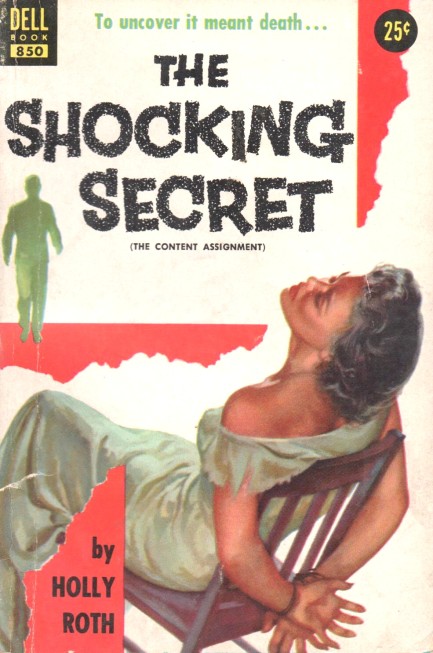
Holly Roth, who also wrote as P.J. Merrill and K.G. Ballard, originally published The Shocking Secret as The Content Assignment in 1954. This Dell edition came in 1955 with William Rose cover art. The story, set beginning in 1948, deals with John Terrant, a British reporter in Berlin whose American love Ellen Content is a CIA agent who disappears during a mission. Nearly two years later her name turns up in a newspaper story that says she's a dancer in New York City. So Terrant crosses the pond to track her down but ends up in the middle of the Cold War, with bad commies and the whole nine.
Roth infuses her tale with an Englishman in New York fish-out-of-water quality, which is occasionally amusing and adds interest, but in the end the entire enterprise comes across lightweight—which is to say it lacks menace and the proper amount of intellectual heft needed for a book about the political/ideological clash of the era. And another issue, though an admittedly nit-picky one, is that the surprise of the title, which we mostly gave away in our subhead, isn't all that shocking. Dell never should have renamed the book.
Moving on to Roth herself, she's one of those writers whose life had an eerie parallel with her fiction. Her 1962 novel Too Many Doctors is about a woman who falls off a ship and loses her memory. In 1964 Roth disappeared from her husband's yacht one stormy night off the coast of Morocco and was never seen again. Officially, her death was an accident. If we get ambitious maybe we'll read Too Many Doctors. While we can't recommend The Shocking Secret, we wouldn't be surprised if several of her other books are better. Her reputation would seem to suggest it.
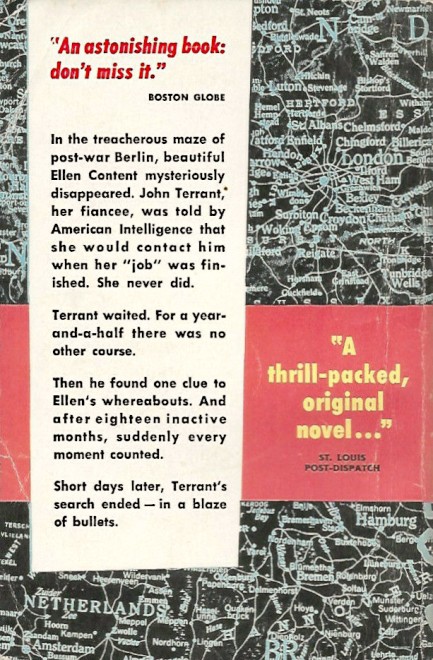
 Thanks to the memorabilia market you can buy a new identity without breaking the law. 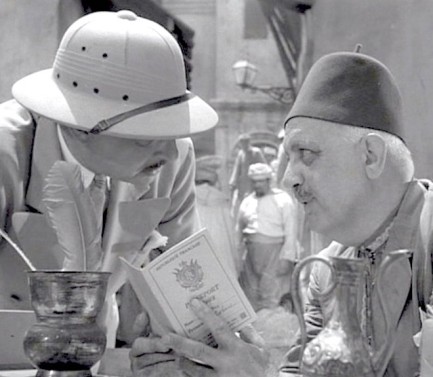
Okay, film buffs—can you identify the movie from which the above frame is taken? We're betting a good percentage of you knew it even before you read the question. It's Casablanca, and we're sharing the image because it shows one of the prop passports used in the film. The most important of those passports belonged to Czech resistance figure Victor Laszlo, played by Paul Heinreid. Props of that type are big items for movie memorabilia collectors, and few collectibles are more popular than those from Casablanca.
Below you see the cover and some interior pages of one of the actual prop Lazslo passports made for the movie, complete with Heinreid's photo and various official-looking visa stamps. There's disagreement on the spelling of Laszlo's name—the prop says Laslo, on AFI.com it's Lazlo, and on IMDB it's Laszlo. The movie was made before end credits were a thing, so you can't find out there. A script would settle it. Maybe that'll be auctioned next. Anyway, this passport was auctioned a while back, and incredibly—or perhaps not—went for $12,500. You know our rule. Actually it's two rules: Never pay more for something than a flight to Paris costs; and never pay a lot for anything that can be used to swat a fly. Of course, if you've seen the movie you know the dox of crucial importance are really the letters of transit everyone desperately wants. We've added one of Victor Laszlo's feuilles de déplacement (which says Laszlo) at bottom. It was auctioned too, but the passport went for more.
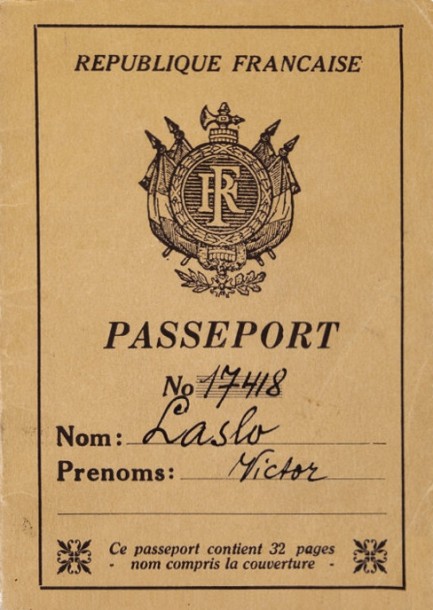 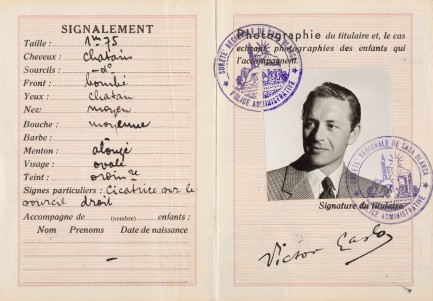 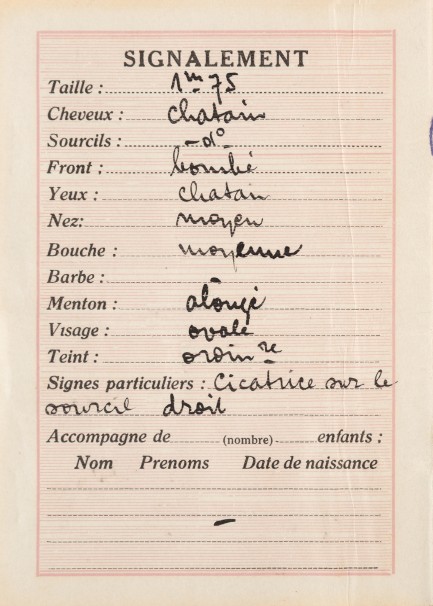 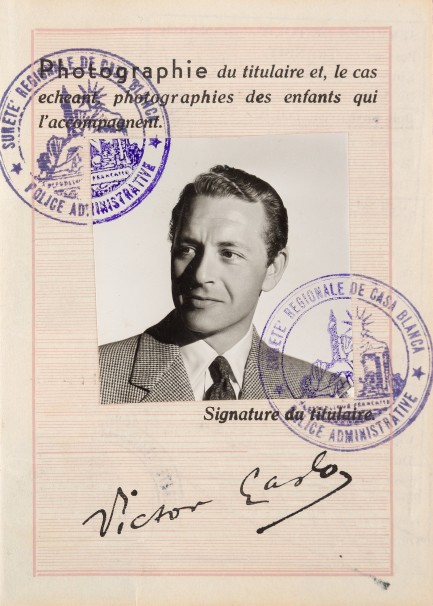 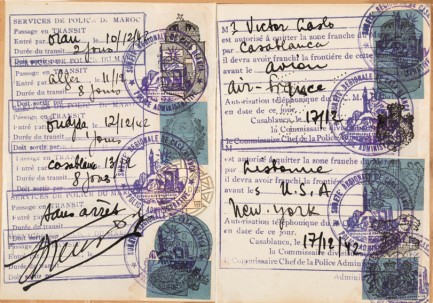 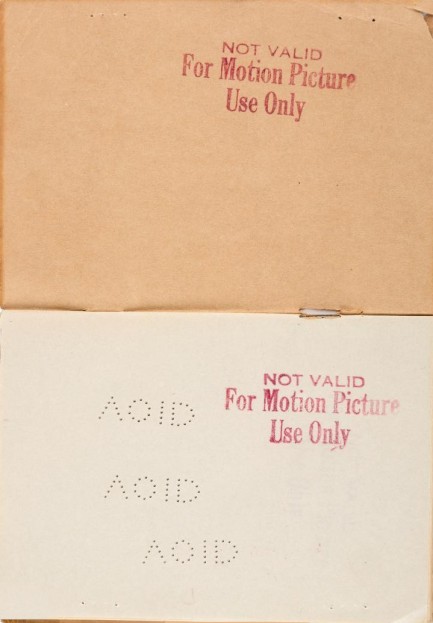 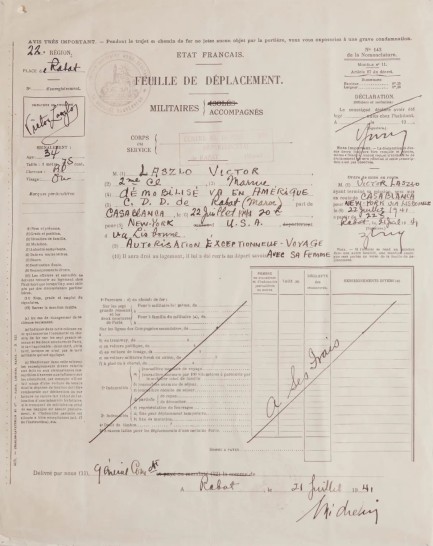
 Any port in a storm—except maybe this one. 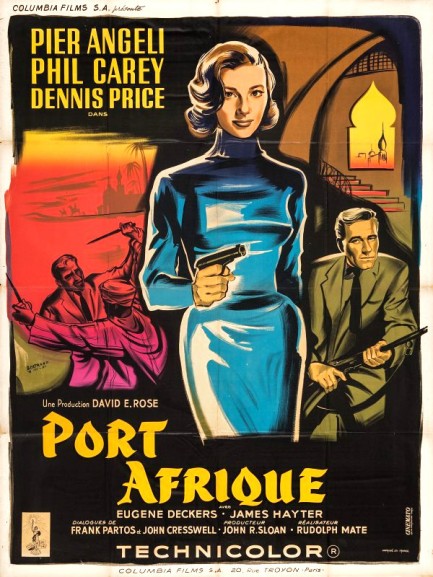
This French poster for the British made film Port Afrique was painted in a style that made us certain it was the work of Constantin Belinsky. But nope—it's signed by André Bertrand, and it's a very nice piece. As the art indicates, the movie is a North African adventure, a vehicle for Italian rising star Pier Angeli, and it can be described with one word—exotic. The filmmakers turned the E dial up to 11, location shooting in Tangier to create a fictional city of Port Afrique that's part Berber, part French, and part Spanish. Casablanca comparisons are inevitable, but solely in terms of exteriors Port Afrique is greatly superior. There's simply nothing like the real thing. The movie is also shot in color, which adds to its appeal, even if it detracts a bit from its noirish ambitions.
As in Casablanca, much of the action in Port Afrique revolves around a bar, in this case Le Badinage, which seemingly can afford to have more performers than customers. The bar's beautiful chanteuse—there's always a beautiful chanteuse—is played by the elfish Angeli, who's stuck in town without a passport and suffering under the attentions of the proprietor Nino. The threat in his overtures is unspoken but clear—no punani, no passport. Into this situation arrives a wounded American pilot with the unlikely name Rip Reardon, played by future b-movie stalwart Phil Carey. After his onscreen run he would find himself in soap opera purgatory as Asa Buchanan on One Life To Live, but here he gets his chance to help anchor a big drama. Shortly after Rip arrives his wife turns up dead. The cops call it a suicide, but Rip decides to take the investigation into his own hands, with all the usual twists and turns.
Port Afrique has a lot of problems. The script is clunky and improbable, the motivations of its characters murky, and the chemistry between its stars lukewarm. Carey ended up on soap operas for a reason, clearly on display here. He has little range, and none of the heft needed for his role. As for Angeli, she never became the superstar her advocates intended, and again, you can see why. She's better than Carey for sure, yet she still lacks the fire her role needs. But here's the thing—we think, for serious film buffs, the movie is worth watching anyway. It looks amazing, from the cinematography to the production design, and its goal of being a Technicolor noir is worth examination and discussion. But casual film fans may want to steer clear. After premiering in the U.S. in 1956 Port Afrique reached France today in 1957.
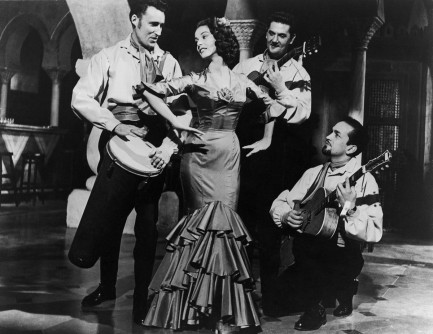 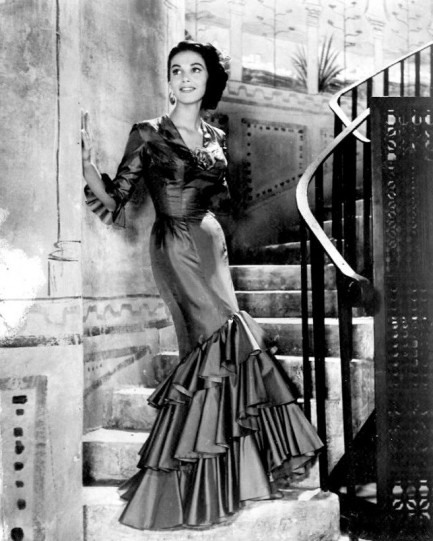 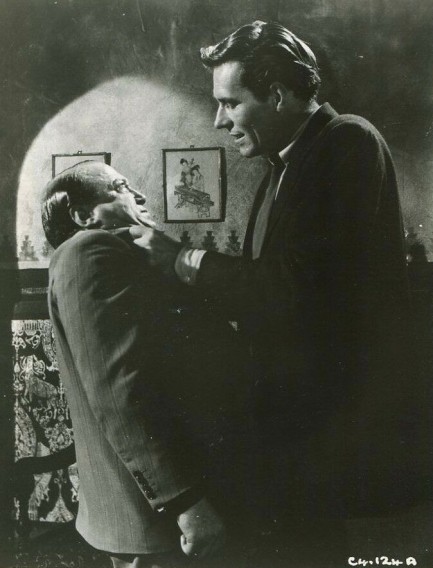 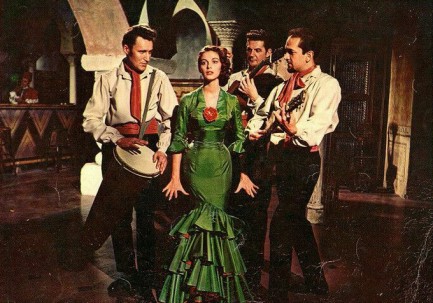 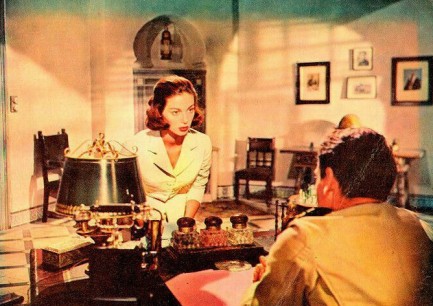 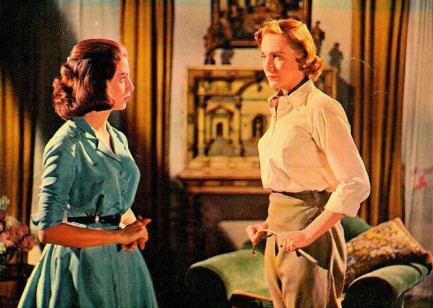 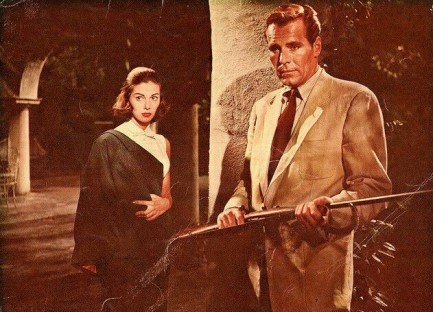 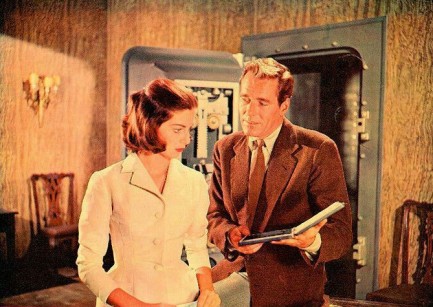 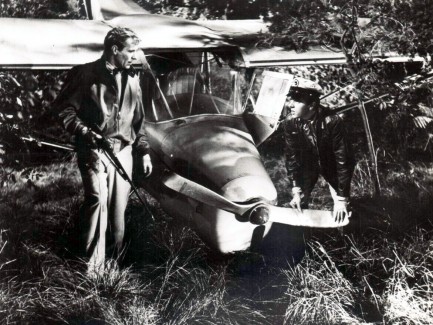 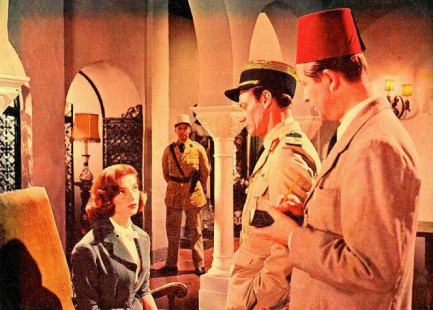 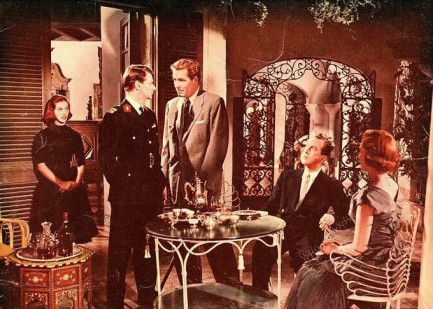 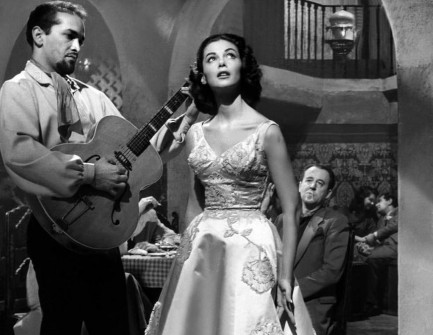 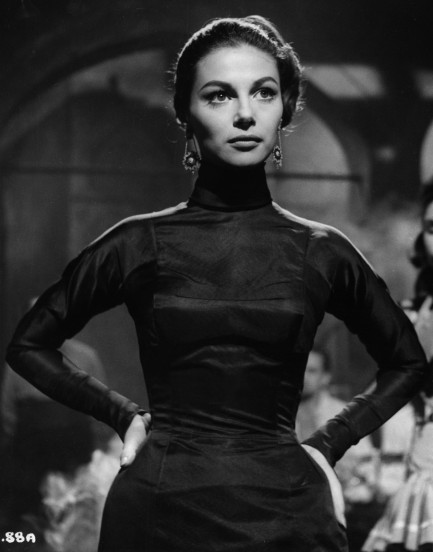
 I know these regional airports lack the usual amenities, but a shuttle to the terminal sure would be nice. 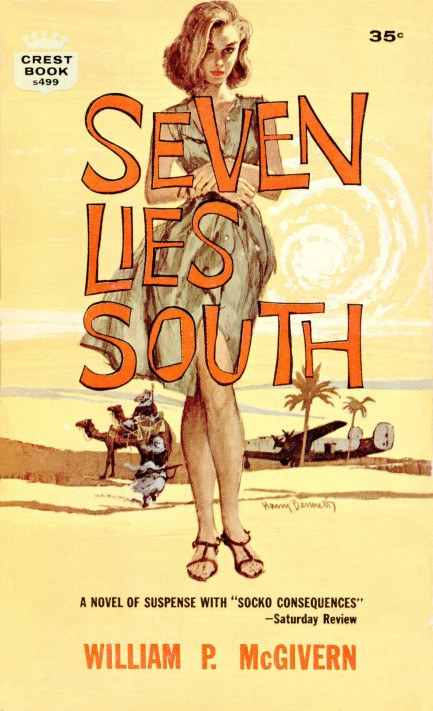
We've mentioned before that we like to read books about places we've been, but we had no idea the 1960 thriller Seven Lies South was set in Spain and Morocco. We impulse-bought this 1962 Crest edition after seeing William P. McGivern's name and taking in the striking Harry Bennett cover art featuring a woman, an aircraft, two bedouins, and their camels. McGivern wrote the excellent 1961 juvenile delinquent thriller Savage Streets, so that was all we needed to know. We found out in the first page that the setting, as the story opened, was Malaga, Spain, and went, “Oh, okay—even better.”
The book stars Mike Beecher, a former bomber pilot, now in his late thirties and doing a belated Lost Generation bit—idleness, parties, a rotating cast of acquaintances, and a lot of solitary reflection in a foreign land. His Sun Also Rises-style fatalism is a little tedious, in our view. After all, he was never wounded in the sex organs like Jake Barnes, and if one's naughty bits function, there's always reason to smile. In any case, one day he meets a beautiful young woman named Laura Meadows, who embodies his dissatisfaction:
She symbolized everything that was unobtainable, beyond his reach; the rosy and prosperous life of America, with the tides of success sweeping everyone on to fine, fat futures.
But not everyone, of course. Entire ethnicities were excluded from that sweeping tide of success. Things are unobtainable for Beecher, but only because he's made a choice to reject them. What a luxury, to reject something, then bemoan what one “can't” have, when many people really can't have it. It's not a flaw in the book, so much as a cultural blind spot—perhaps deliberately inserted by McGivern, who was generally insightful about such issues. You have to sort of smile at Beecher's inability to appreciate being reasonably young, healthy, and knocking around the south of Spain drinking wine. Not everyone gets to do that. That's exactly what we do, and we appreciate it every day.
Beecher is coerced into helping to steal a plane headed for Morocco, but the mission goes wildly sideways, which unexpectedly mutates the narrative into a desert survival adventure. In order to set up and progress through this section, McGivern has his characters sometimes undertake actions that don't exactly resound with logic, but even so the book is good. McGivern can really write, even when it verges on the preposterous. He was more at home in the suburbs of Savage Streets, but he navigates the Spain and Morocco of Seven Lies South deftly enough. We have no hesitation about trying him again.
 In Casablanca no other place compares. 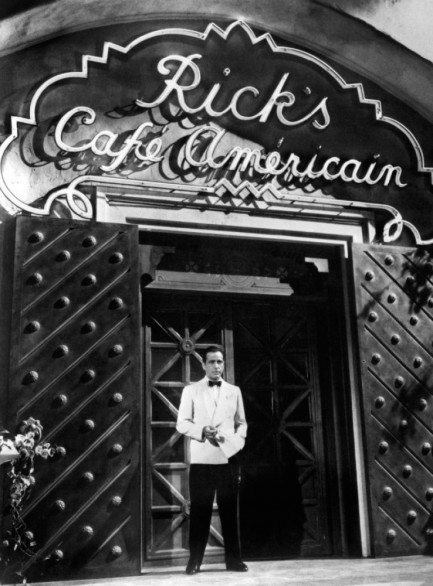
We're back in the house today—Casablanca, that is. Several days ago, on the film's Italian premiere date, we showed you some Italian posters, and today, on its U.S. premiere date, we're taking a close look at possibly the most famous fictional bar in cinema history—Rick's Café Americain. Casablanca is one of the greatest films ever made, and it's fair to say Rick's was a supporting character. Filmgoers of 1942 found themselves steeped in its otherworldly Moroccan atmosphere, as scenes were staged in its courtyard, dining room, gambling room, at its lively bar, and in Rick's roomy upstairs office and personal living quarters. We've never confirmed this, but we suspect one third of the film occurs inside Rick's Café. We have photos of every area we could find of this iconic and exotic “gin joint”—as Bogart cynically describes it—and we even turned up a blueprint.
You'd be tempted to think bars like Rick's exist only in film, but you'd be wrong. We've been to places that have exotic architecture, excellent food and drink, lively musical entertainment, well dressed international clientele, and the aura of being in the middle of a spy caper. The decadent colonial bar Abaco, located in Palma de Mallorca, comes immediately to mind, as does the supper club Meson Pansa Verde in Antigua, Guatemala, where they have live jazz in a converted wine cellar and a friend of ours once famously pushed his date into the pool. We've been to Rick's-like places in Mexico, the Caribbean, the Greek Islands, and, appropriately, Morocco, in both Fes and Marrakech (we're not fans of the Rick's that currently operates in Casablanca—same name, very diminished feel). But magical places do exist, which means even if Bogart's beloved café was never real, having those types of nights is possible. We recommend making it your mission to seek them out. clientele, and the aura of being in the middle of a spy caper. The decadent colonial bar Abaco, located in Palma de Mallorca, comes immediately to mind, as does the supper club Meson Pansa Verde in Antigua, Guatemala, where they have live jazz in a converted wine cellar and a friend of ours once famously pushed his date into the pool. We've been to Rick's-like places in Mexico, the Caribbean, the Greek Islands, and, appropriately, Morocco, in both Fes and Marrakech (we're not fans of the Rick's that currently operates in Casablanca—same name, very diminished feel). But magical places do exist, which means even if Bogart's beloved café was never real, having those types of nights is possible. We recommend making it your mission to seek them out. 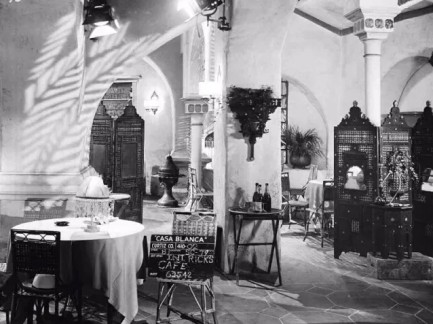 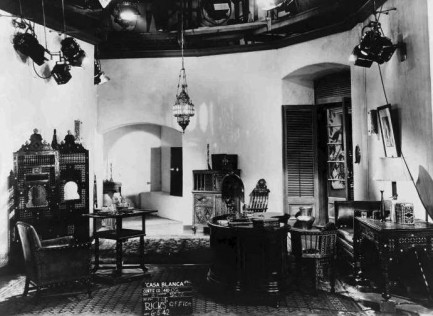 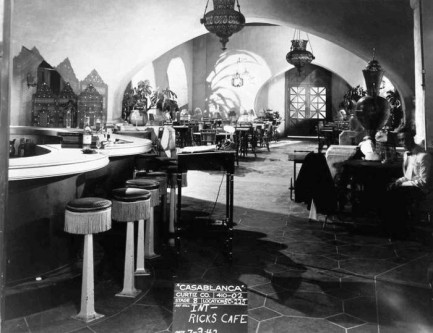 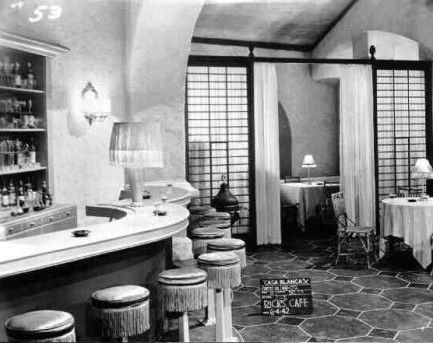 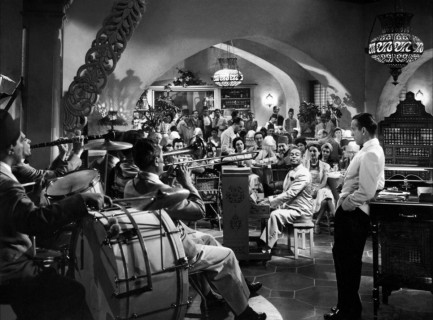 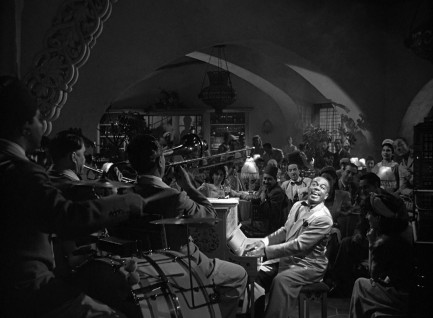 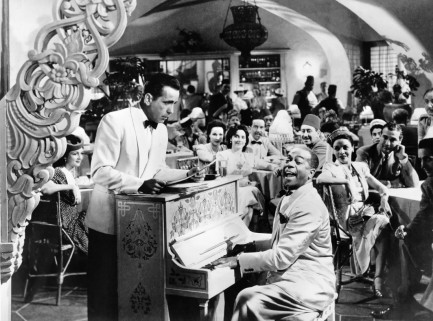 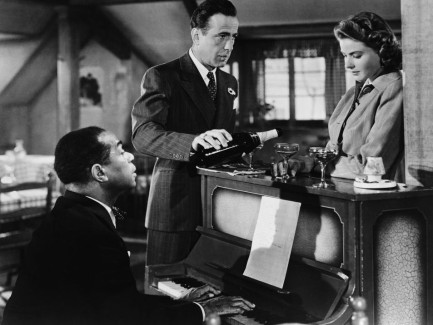 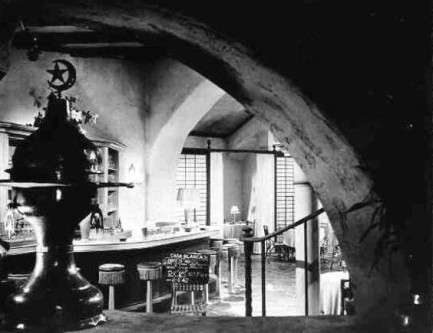 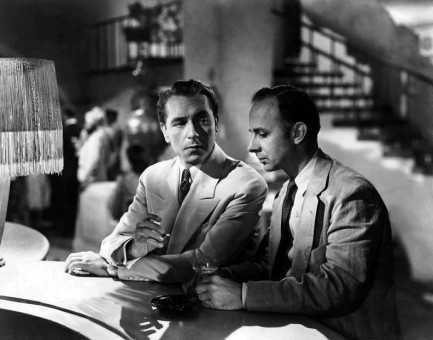 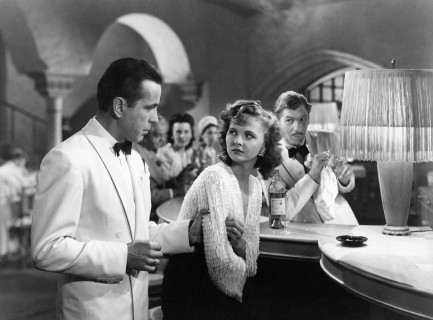 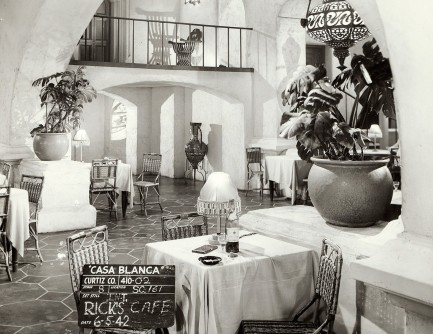 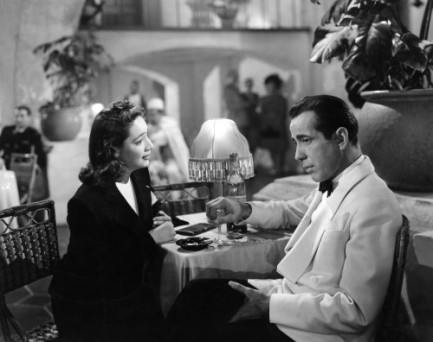 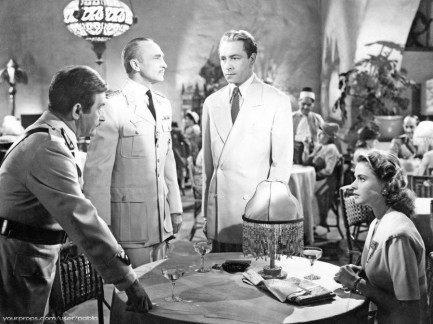 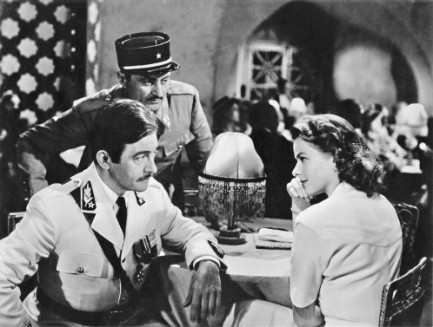 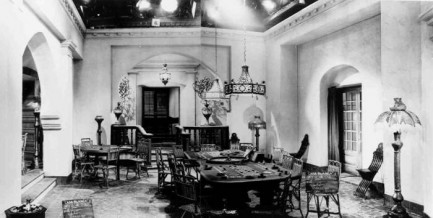 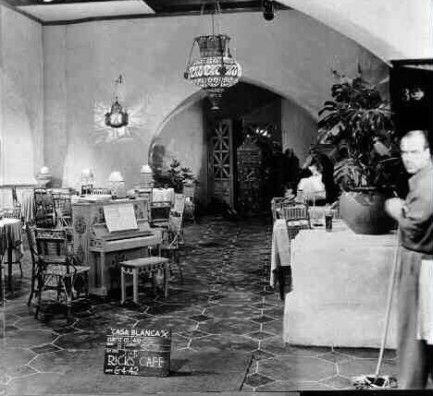 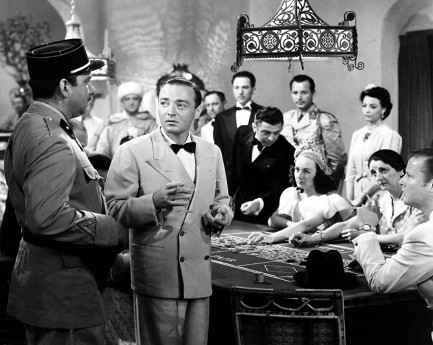 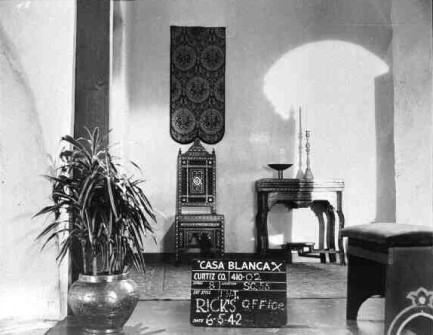 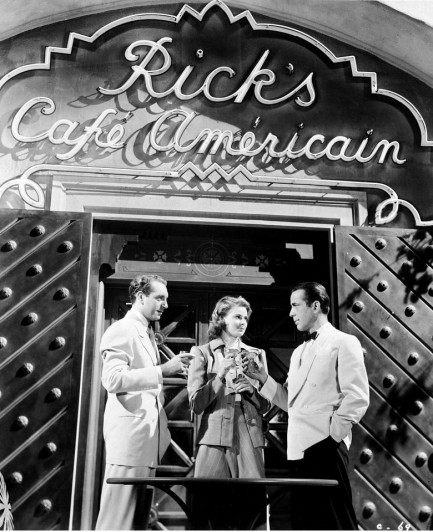
 The FBI stretches its jurisdiction all the way to Morocco in 1953 thriller. 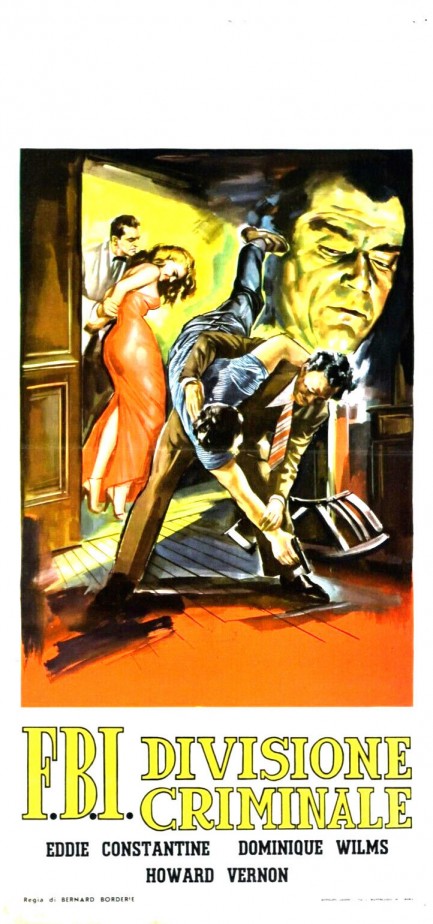 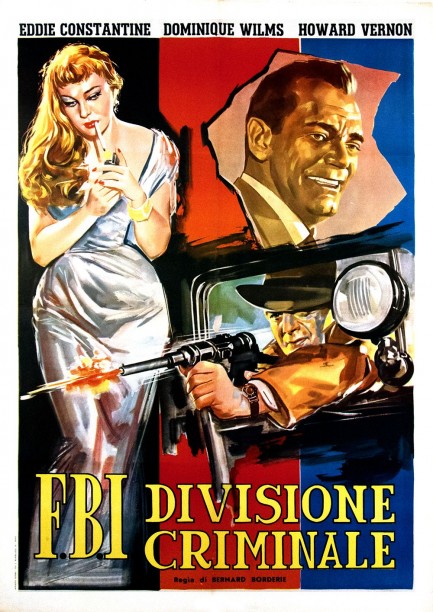
Above, two beautiful Italian posters for F.B.I. divisione criminale, originally titled La môme vert de gris, but known in the U.S. as Poison Ivy. The film was based on a Peter Cheyney novel also named Poison Ivy, and starred Eddie Constantine as an American G-man in Morocco, and Dominique Wilms as a femme fatale known as—you guessed it—Poison Ivy. We talked about the movie at length in May, so if you're curious have a look here.
 French crime drama throws Caution to the wind. 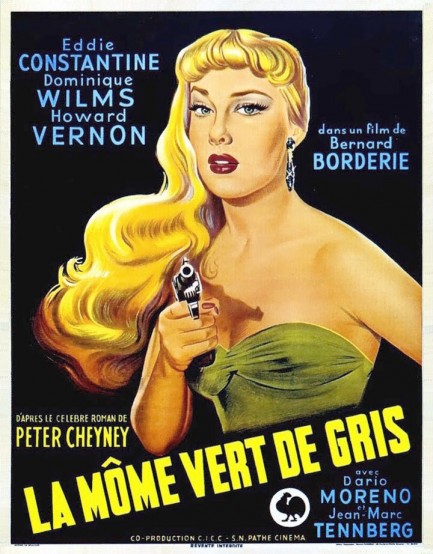 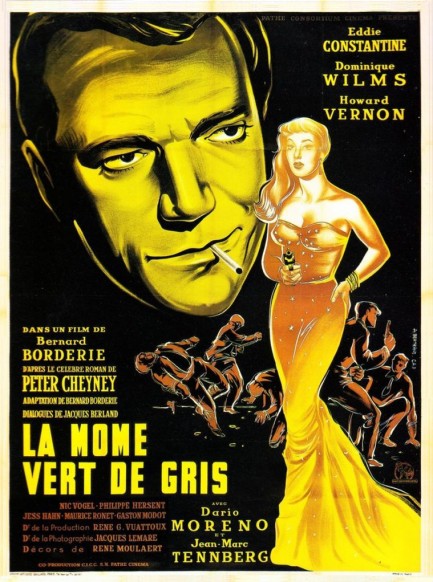
Here you see two posters for the 1953 French crime drama La môme vert de gris, which was called Poison Ivy in the U.S. This was adapted from a 1937 novel by Peter Cheyney that featured his recurring character FBI agent Lemmy Caution, who onscreen is played by Eddie Constantine. When two million dollars worth of gold goes missing Constantine is sent to Casablanca to determine its disposition and identify all malefactors involved. He finds himself pitted against a criminal mastermind of sorts, and a hive of henchmen that occupy a nightclub, a yacht, and a hideout in Casablanca's old quarter. Constantine deals with all comers by applying the time-honored advice: when in doubt, punch them out.
Film buffs the world over associate Casablanca with the Humphrey Bogart film of the same name, but the city you see here is different from the one made famous by Bogart and Co. ten years earlier. The Casablanca of this film is a maze of L.A.-style roads, white skyscrapers, and an industrial port the size of Long Beach. We checked population figures and learned it was already a major city of more than 500,000 people during the early 1940s, which means that Casablanca's village feel is really just a clever cinematic fantasy. Poison Ivy's Casablanca is real, and the many location shots mixed into the movie prove it.
That's Dominique Wilms on the top poster, and she's the reason we watched the movie. In this, her cinematic debut, she plays a femme fatale named Carlotta de la Rue, which of course indicates that she's a woman from the street. If that isn't enough to warn the men away, her friends call her Poison Ivy. Why? Because she burns. Hopefully that's meant figuratively, and above the waist. A character bringing so much heat must of course perform a torch song, which she sings with detachment, while the lyrics—as they usually do—indicate deeper issues: “I wander with my sorrow, along with my memories, looking for my old joys, which I've seen fade and die.” See? She just wants to be loved, assuming a man isn't thwarted by her acid tongue, that ironic right eyebrow, and the barbed wire encircling her heart.
The movie is certainly watchable, though it's nothing special aside from its exotic setting. But you have to appreciate the French love for U.S. crime fiction. In fact, director Bernard Borderie got the band back together and cast Constantine, Wilms, and her prehensile eyebrow in the next Caution movie, 1954's Les femmes s'en balancent. Constantine and Wilms also co-starred in 1957's Le grand bluff, another Caution adaptation, but helmed by Patrice Dally. Constantine went on to make Caution the signature character of his career. Wilms, who at age ninety is still out there somewhere, had about a dozen more roles before leaving cinema behind, but we think she had “it,” and will definitely check out some of her other work. 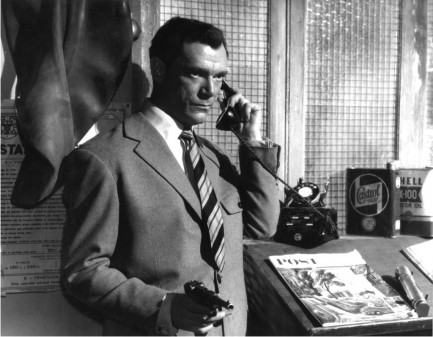 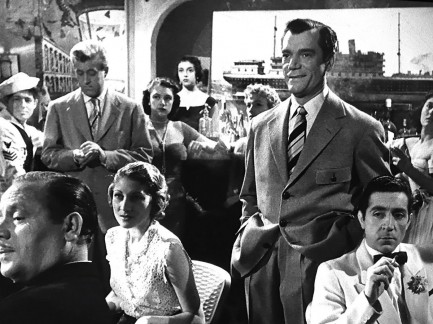 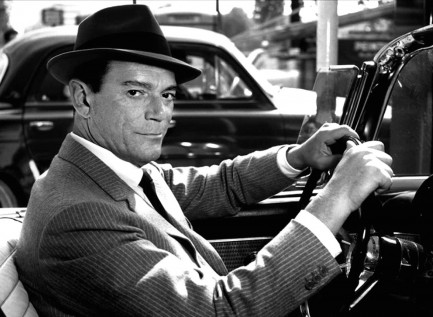 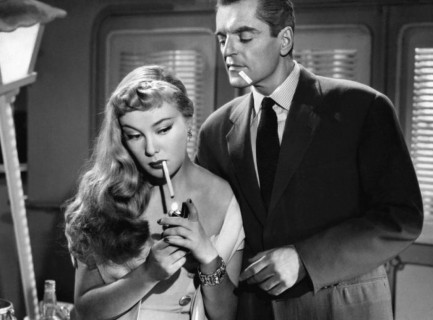 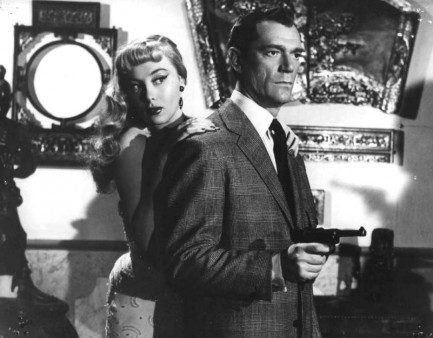 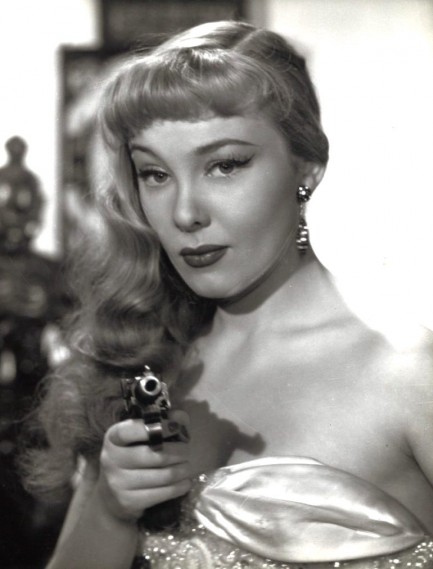 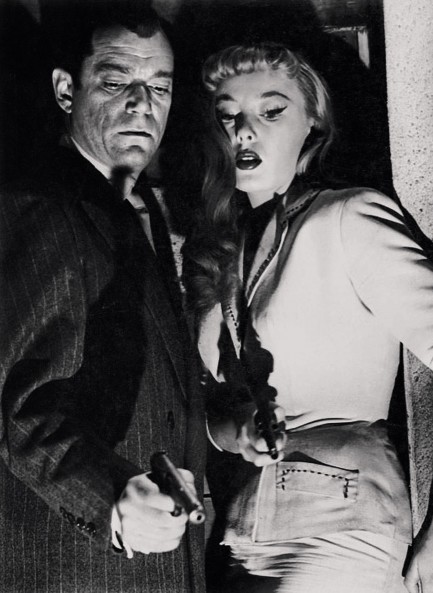 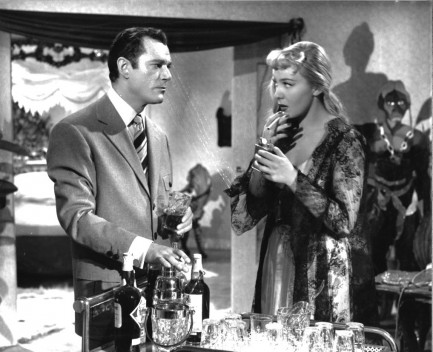 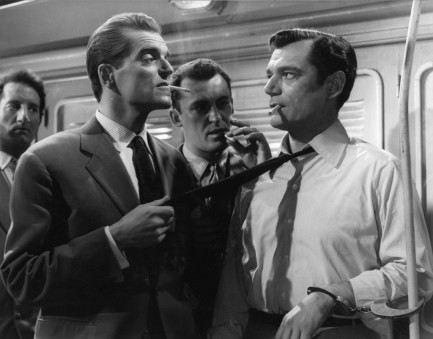 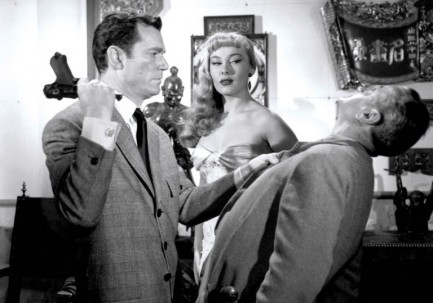 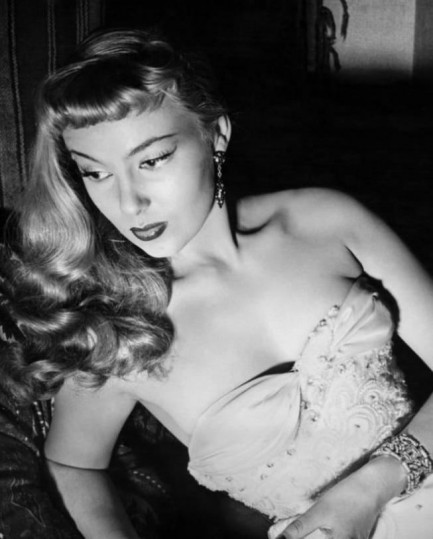
 Are you absolutely sure the place we're staying is this way? 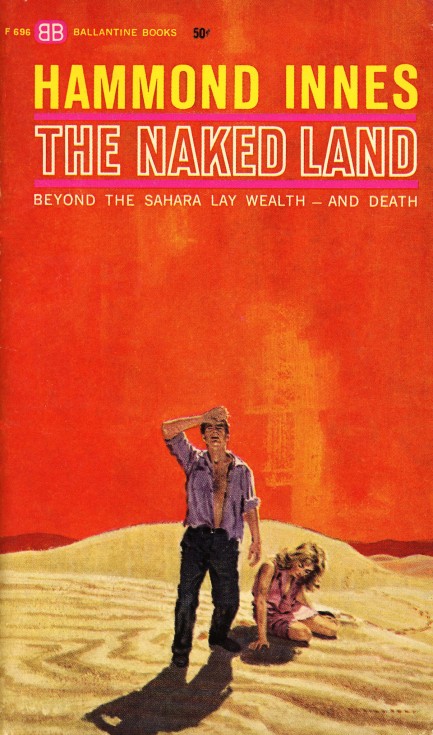
Smartphones have certainly made this situation less likely to occur, but on the other hand, when you come back from a trip which story do you tell your friends? The one about how you got exactly where you wanted to go, or the one about how you got lost and thought you were done for? Hammond Innes sets The Naked Land in French Morocco, as it was called then, and we can really sympathize with the two figures on the cover art because, as some of you may remember, we've been lost in Morocco too. One of the main characters here is a missionary—and we know that always goes well—who heads down to the Magreb and ends up trying to secure a mineral rich patch of land. You know the drill. Westerners trying to claim their divinely appointed riches while benighted locals stand in the way. You also get the added elements of assumed identity, spywork, communism, a murder mystery, Marrakech's mazelike central souk (awesome, by the way), and finally, an actual element—silver. The book was originally published in Britain as The Strange Land, with this U.S. edition coming in 1954 fronted by cover art from Ed Valigursky.
 Around the world in sixty pages. 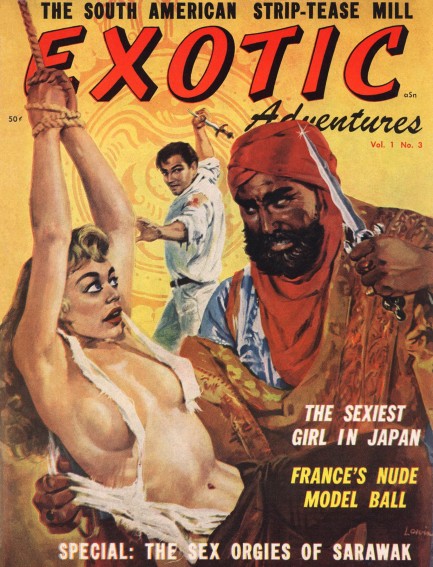
Exotic Adventures was a men's magazine put out by NYC based Gladiator Publications, Inc. It seems obvious the company had great ambitions, but it managed only six issues before folding. This one came in 1959 with cover art signed “Louis,” whose full identity is not given. In fact, only three people are listed as staff—editor George P. Wallace and two others—so the cover artist wasn't the only hard worker who got short shrift. The individual authors are given bylines, though, as are the men who narrated their "true" tales to biographers. Exotic Destinations lived up to its name, with pieces set in Kashmir, French Cameroon, Morocco, Honduras, Malaya, and Borneo, and nude models who are supposedly from Japan, Brazil, France, and Germany. It was all printed on glossy paper, which is why you won't see the usual yellowing you get with old magazines, though the printing got a little streaky and inconsistent in the middle pages. Still, taken as a whole Exotic Adventures is a high quality publication, which we snared courtesy of the now idle Darwin's Scans blog. Forty-plus panels below. 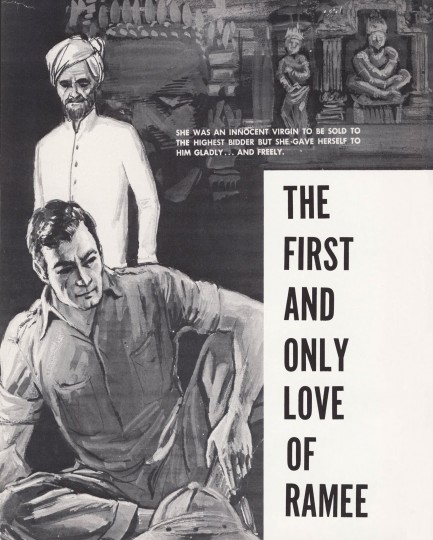 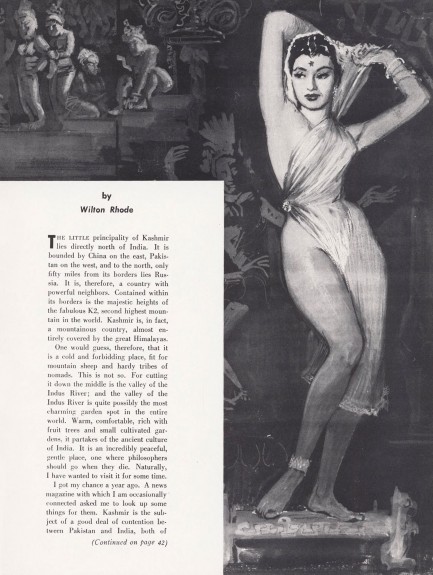  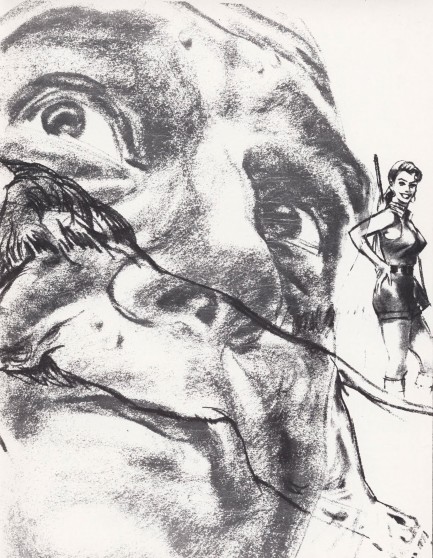 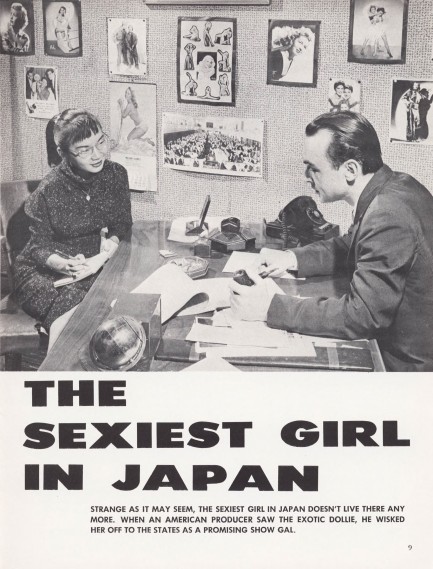 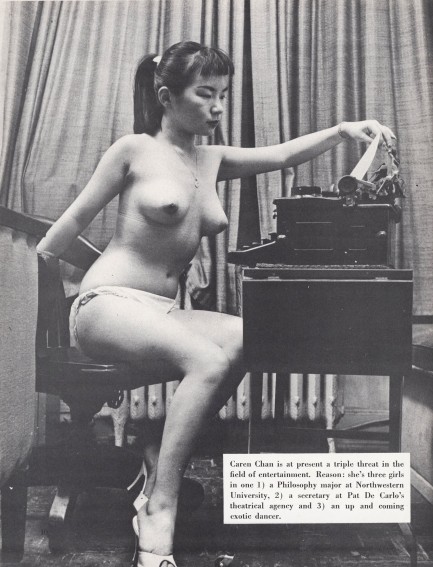 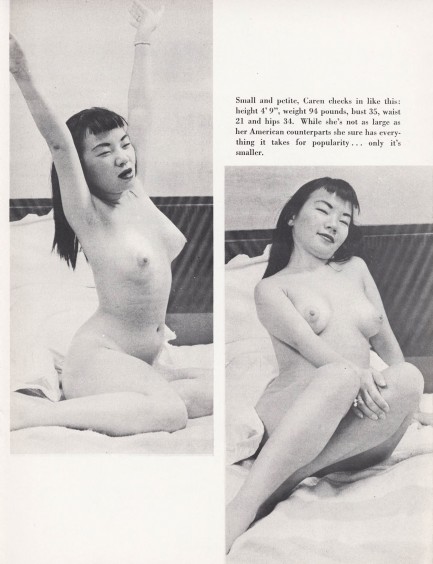 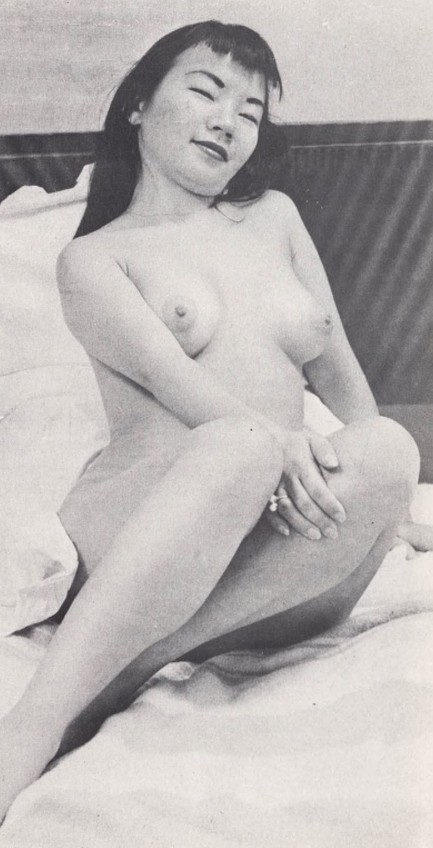 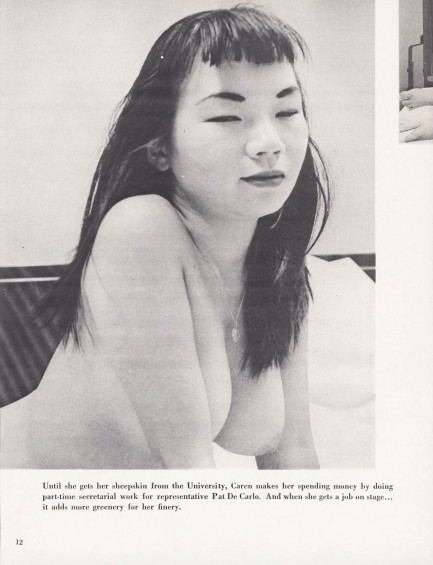 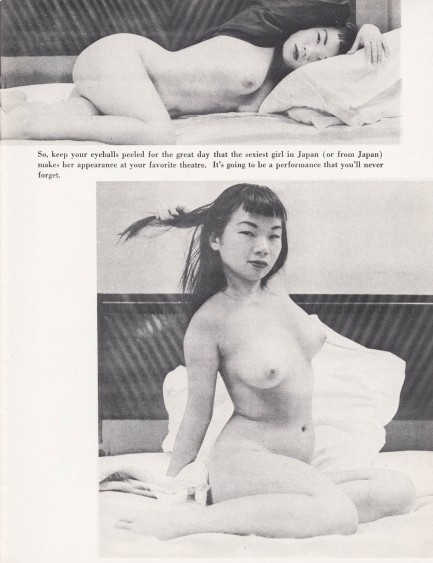  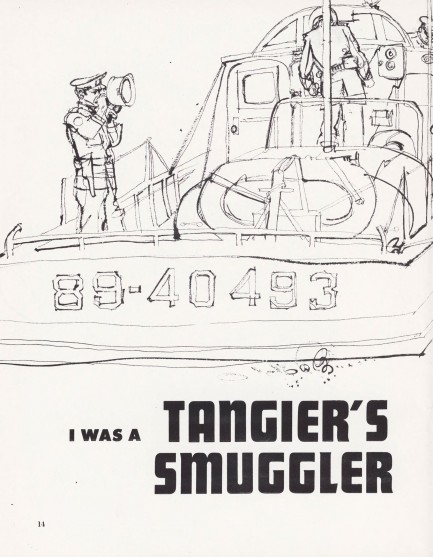 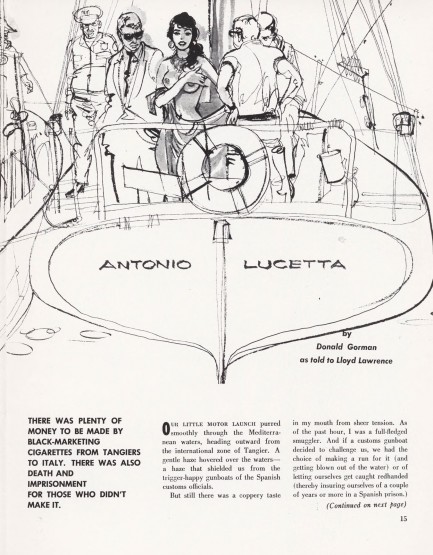 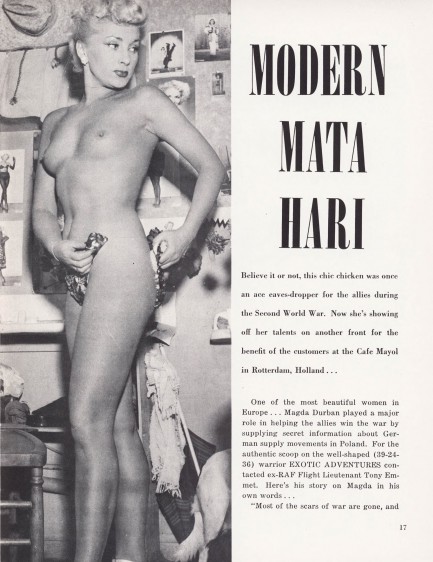 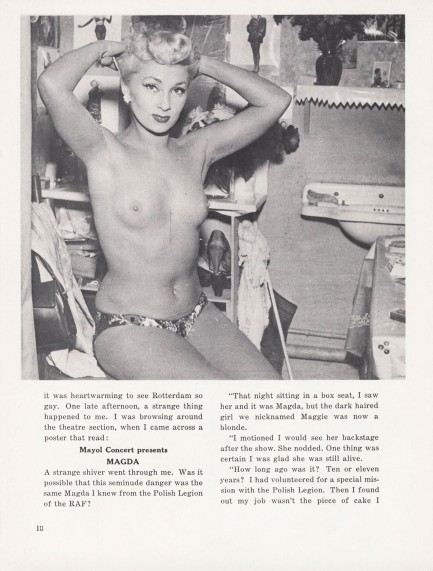 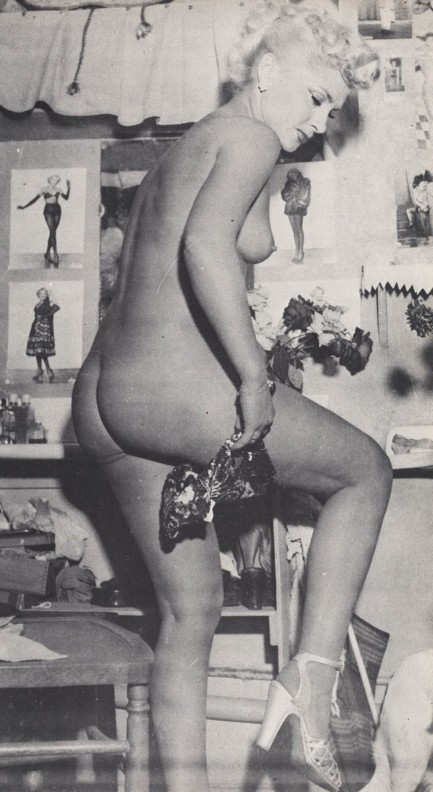 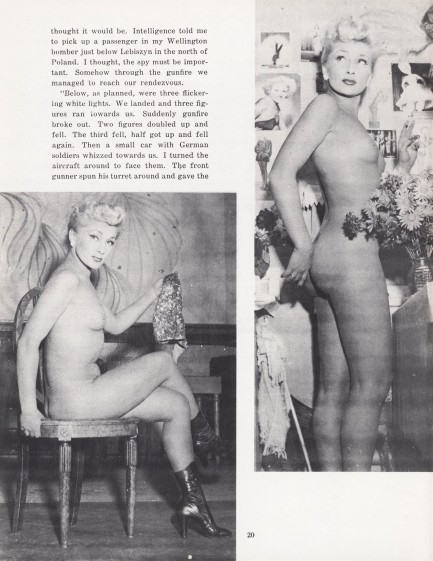 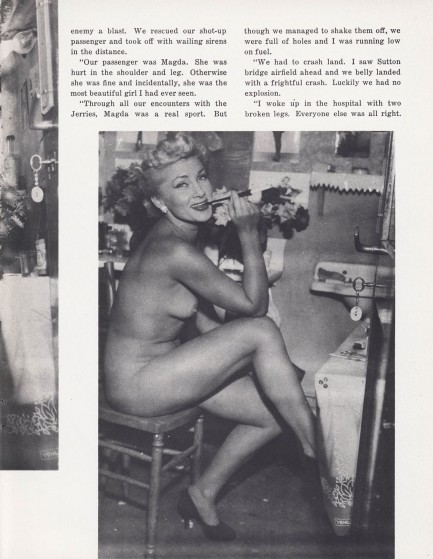 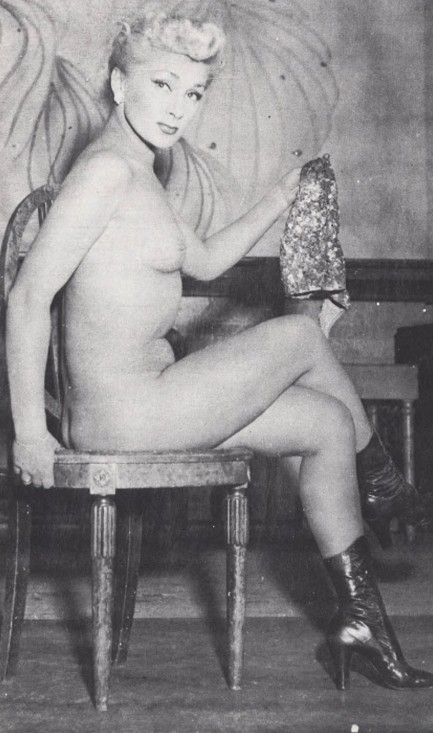 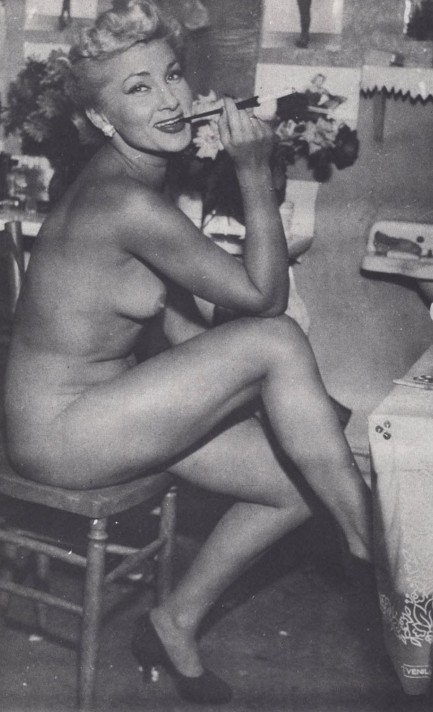 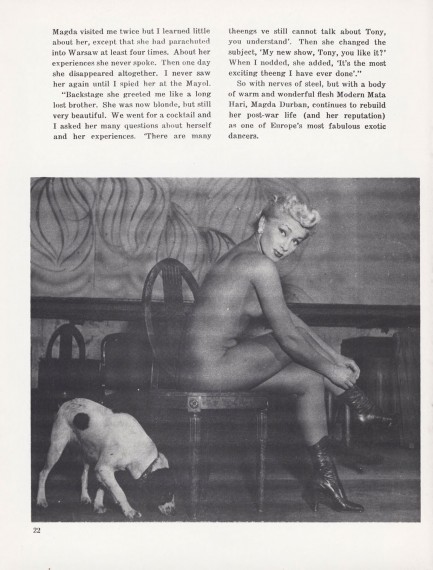 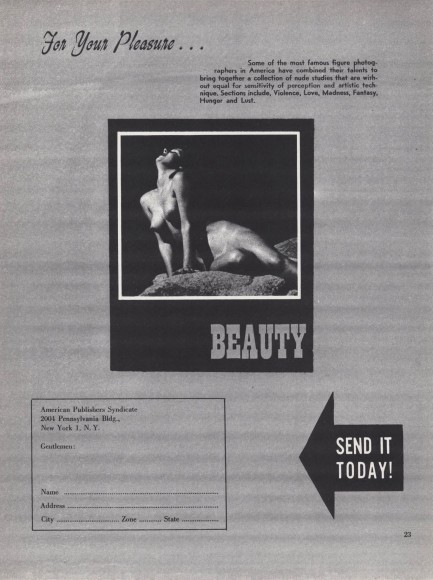 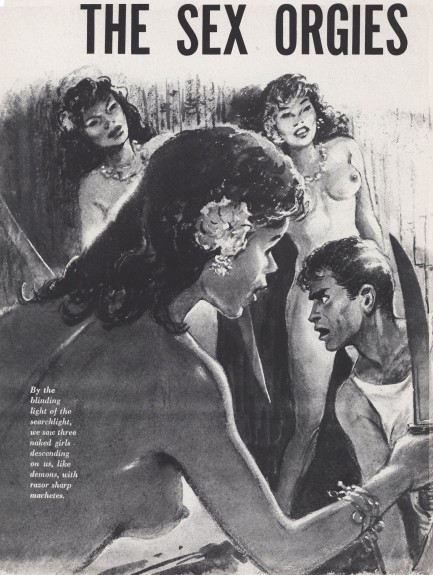  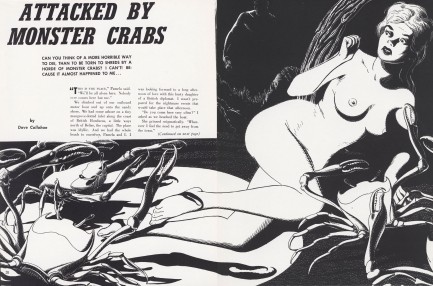 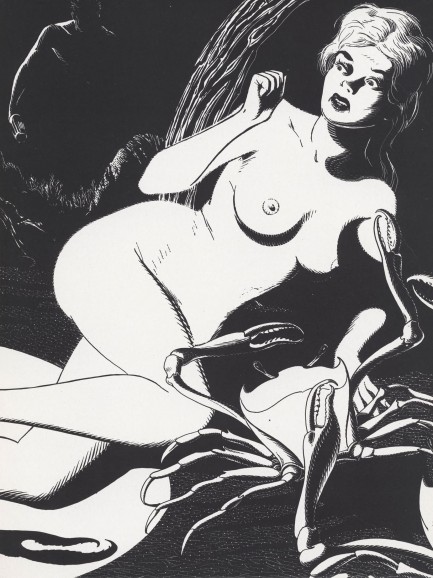 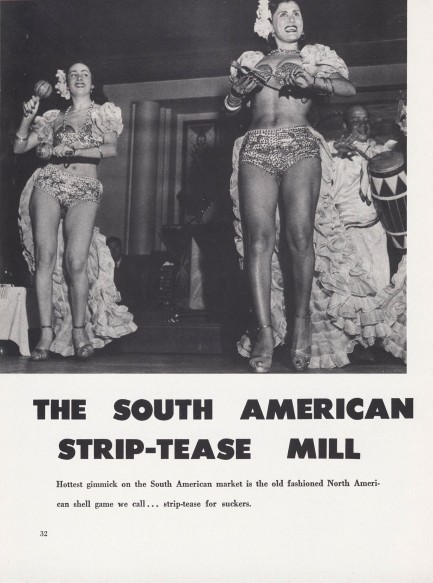 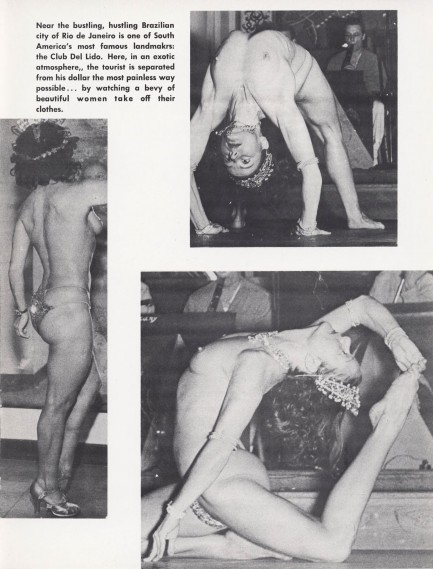 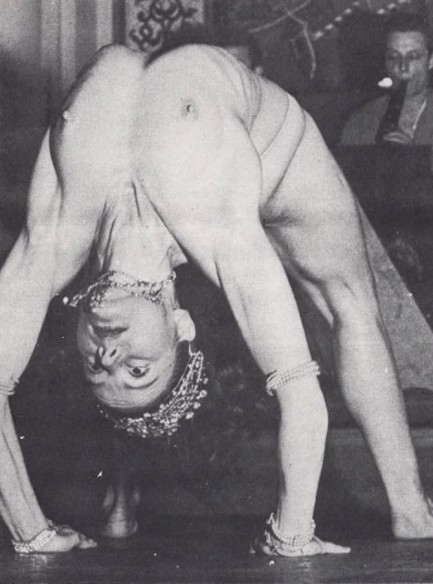 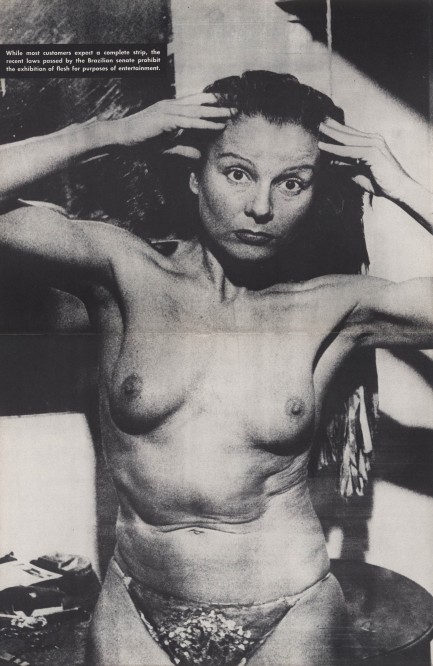  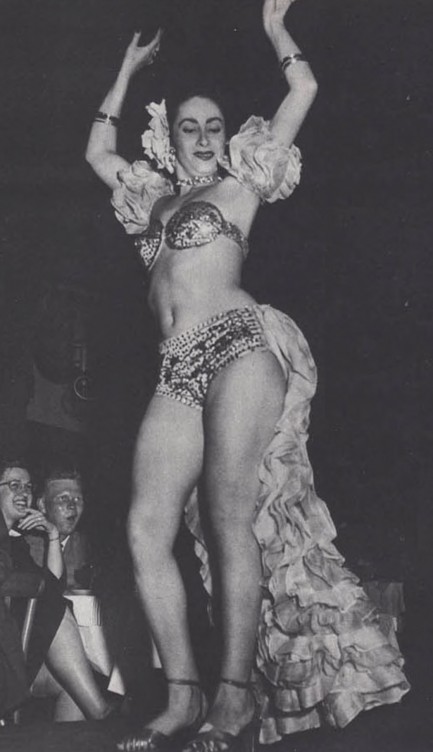 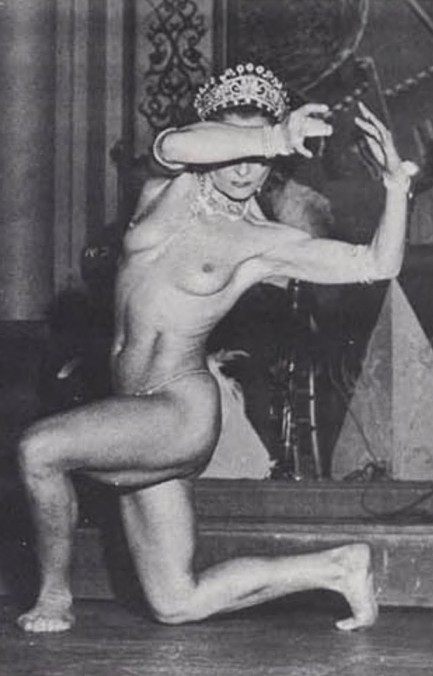 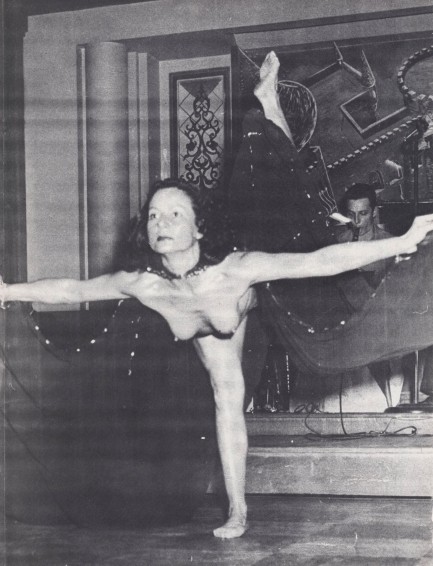 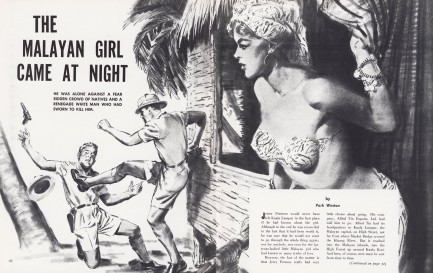 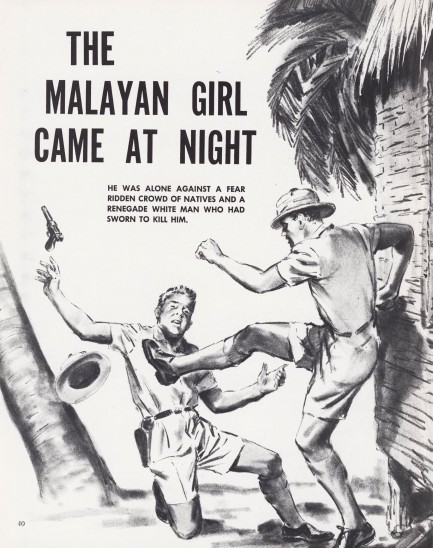 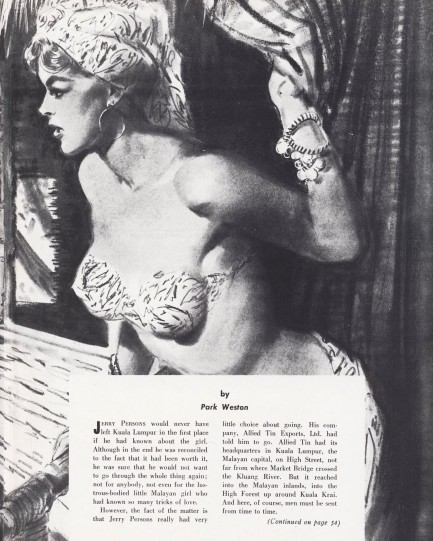 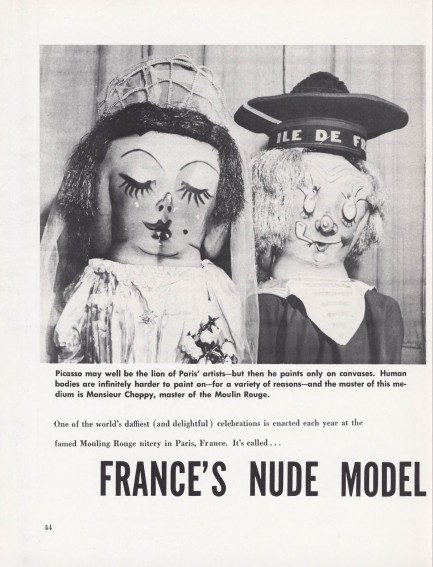 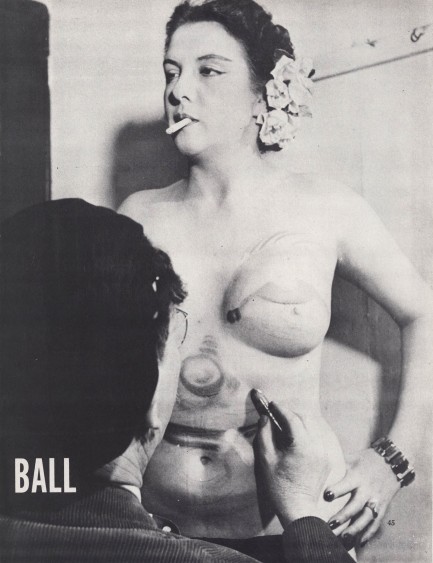 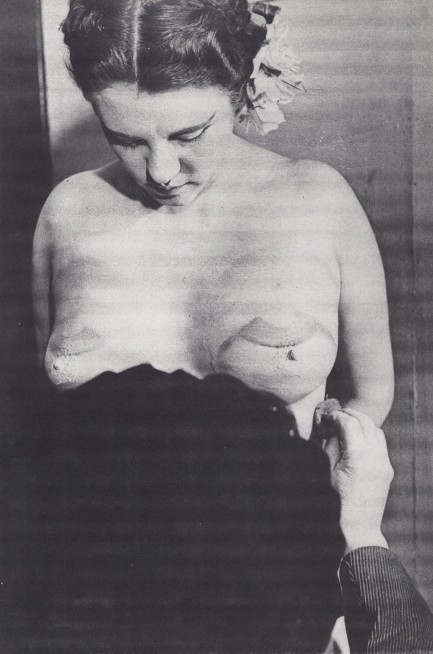 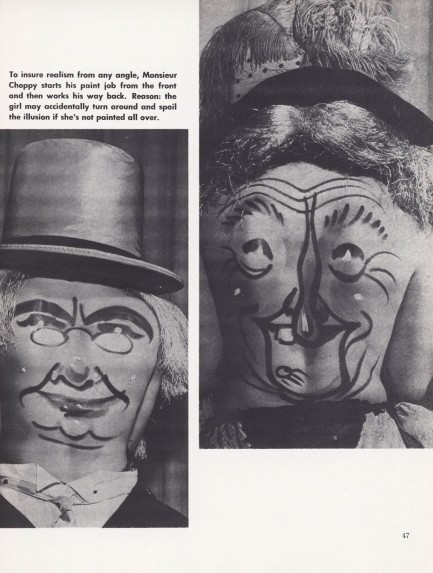 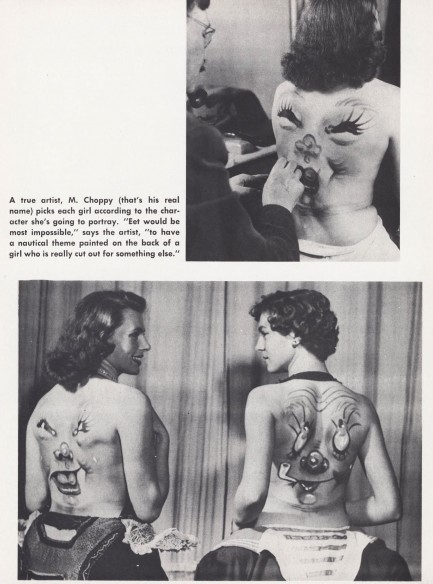 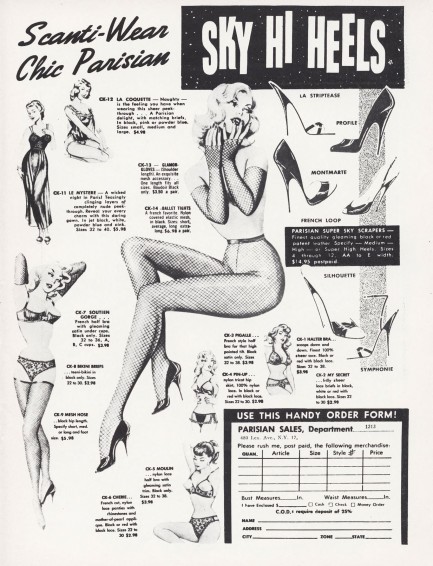
 Huh? What do you mean you tipped him enough earlier to cover our whole stay? 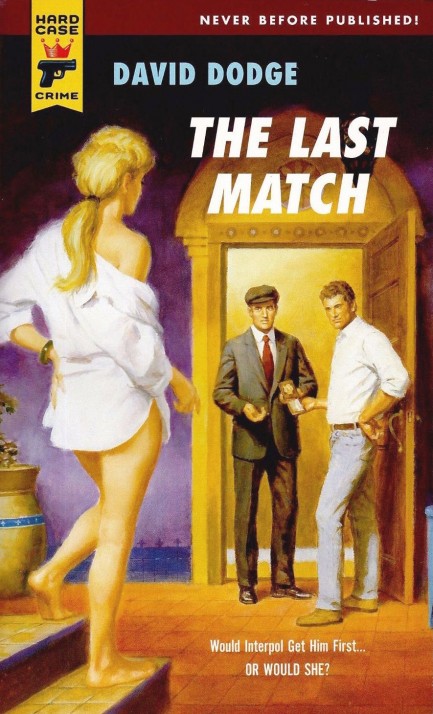 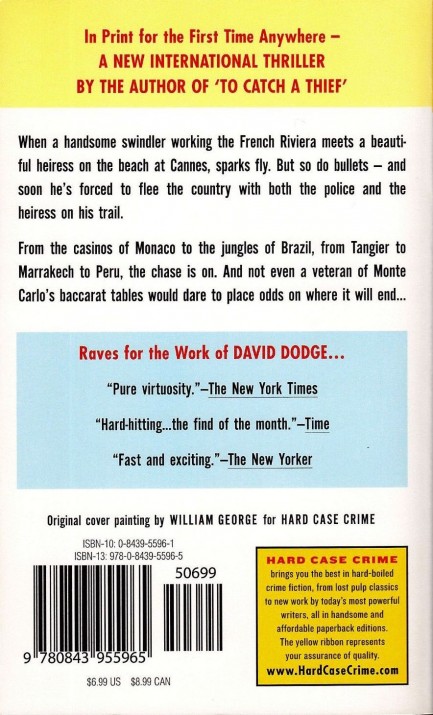
David Dodge was a very deft writer. When he died in 1974 The Last Match hadn't been published, but Hard Case Crime put it out in 2006, and it falls into the same category as his To Catch a Thief, as well as jet-set grifter novels by other authors. For us this book was tremendously entertaining. Dodge takes his protagonist to Spain, southern France, Tangier, Central America, Brazil, and other exotic locales, weaving in foreign vocabulary and mixing it all up to reflect his character's life as an international rolling stone. Like when he explains offhand that the Brazilian soft drink guaraná is fizzy like a Portuguese vinho verde, but sweet, and perfect for mixing with cachaça. Little things like that give the tale great flavor. And the story of an inveterate con man knocking about from country to country while stalked by a smitten aristocratic beauty (who he refers to as Nemesis) has plenty of amusements. Some say it's not Dodge at his best because it has no plot, but stories only need to entertain. Dodge, like his main character, is remembering the highlights of his life and mixing in a portion of male-oriented fantasy. We'll admit to having a weakness for the tale because we've been to most of the places mentioned, had high times drinking guaraná mixed with cachaça, and met more than one charming hustler or beauty who arrived from parts unknown to send the town reeling. But as objectively as we can manage to assess, we think The Last Match is good, lighthearted fun. Highly recommended.

|
 |

The headlines that mattered yesteryear.
1945—Mussolini Is Arrested
Italian dictator Benito Mussolini, his mistress Clara Petacci, and fifteen supporters are arrested by Italian partisans in Dongo, Italy while attempting to escape the region in the wake of the collapse of Mussolini's fascist government. The next day, Mussolini and his mistress are both executed, along with most of the members of their group. Their bodies are then trucked to Milan where they are hung upside down on meathooks from the roof of a gas station, then spat upon and stoned until they are unrecognizable. 1933—The Gestapo Is Formed
The Geheime Staatspolizei, aka Gestapo, the official secret police force of Nazi Germany, is established. It begins under the administration of SS leader Heinrich Himmler in his position as Chief of German Police, but by 1939 is administered by the Reichssicherheitshauptamt, or Reich Main Security Office, and is a feared entity in every corner of Germany and beyond. 1937—Guernica Is Bombed
In Spain during the Spanish Civil War, the Basque town of Guernica is bombed by the German Luftwaffe, resulting in widespread destruction and casualties. The Basque government reports 1,654 people killed, while later research suggests far fewer deaths, but regardless, Guernica is viewed as an example of terror bombing and other countries learn that Nazi Germany is committed to that tactic. The bombing also becomes inspiration for Pablo Picasso, resulting in a protest painting that is not only his most famous work, but one the most important pieces of art ever produced. 1939—Batman Debuts
In Detective Comics #27, DC Comics publishes its second major superhero, Batman, who becomes one of the most popular comic book characters of all time, and then a popular camp television series starring Adam West, and lastly a multi-million dollar movie franchise starring Michael Keaton, then George Clooney, and finally Christian Bale. 1953—Crick and Watson Publish DNA Results
British scientists James D Watson and Francis Crick publish an article detailing their discovery of the existence and structure of deoxyribonucleic acid, or DNA, in Nature magazine. Their findings answer one of the oldest and most fundamental questions of biology, that of how living things reproduce themselves.
|

|
|

It's easy. We have an uploader that makes it a snap. Use it to submit your art, text, header, and subhead. Your post can be funny, serious, or anything in between, as long as it's vintage pulp. You'll get a byline and experience the fleeting pride of free authorship. We'll edit your post for typos, but the rest is up to you. Click here to give us your best shot.

|
|































 clientele, and the aura of being in the middle of a spy caper. The decadent colonial bar Abaco, located in Palma de Mallorca, comes immediately to mind, as does the supper club Meson Pansa Verde in Antigua, Guatemala, where they have live jazz in a converted wine cellar and a friend of ours once famously pushed his date into the pool. We've been to Rick's-like places in Mexico, the Caribbean, the Greek Islands, and, appropriately, Morocco, in both Fes and Marrakech (we're not fans of the Rick's that currently operates in Casablanca—same name, very diminished feel). But magical places do exist, which means even if Bogart's beloved café was never real, having those types of nights is possible. We recommend making it your mission to seek them out.
clientele, and the aura of being in the middle of a spy caper. The decadent colonial bar Abaco, located in Palma de Mallorca, comes immediately to mind, as does the supper club Meson Pansa Verde in Antigua, Guatemala, where they have live jazz in a converted wine cellar and a friend of ours once famously pushed his date into the pool. We've been to Rick's-like places in Mexico, the Caribbean, the Greek Islands, and, appropriately, Morocco, in both Fes and Marrakech (we're not fans of the Rick's that currently operates in Casablanca—same name, very diminished feel). But magical places do exist, which means even if Bogart's beloved café was never real, having those types of nights is possible. We recommend making it your mission to seek them out.



























































































































































